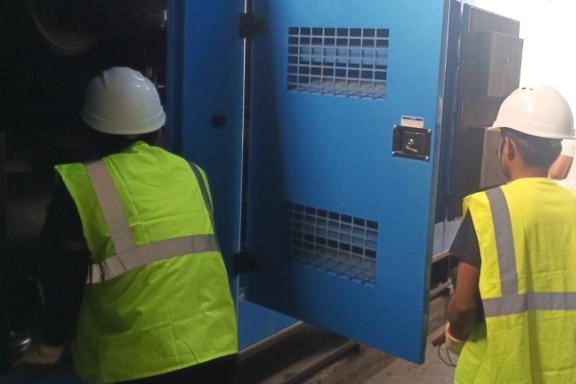What is geothermal energy:Geothermal energy is the energy contained as heat in the Earth’s inside.
The source of this heat is linked with the internal structure of our planet and the physical reactions occurring there. Regardless of the fact that this heat is present in huge, practically limitless quantities in the Earth’s crust, not to mention the deeper parts of our planet, it is unequally distributed, rarely concentrated, And usually in depths too deep for industrial production.The heat is mostly produced from the radioactive decomposition in the earth’s crust as well as friction at the continental plates ‘margins. Geothermal heat energy could be extracted and used for human applications and is abundant anywhere on the Earth’s surface.how is geothermal energy is generated?Geothermal energy use may be classified into three types:
Direct use applications.
Geothermal heat pumps (GHPs).
Electrical power production.
Direct uses:
Probably the most commonly used set of applications includes the direct use of heated groundwater without the need for any special equipment. All direct-use applications use minimal temperature geothermal resources, Approximately between 50 and 150 ° C (122 and 302 ° F). These minimal-temperature geothermal water and steam have been used to heat single houses, as well as entire neighborhoods where different homes are warmed from a central source of supply.In addition, many swimming pools, spas, greenhouses, and aquaculture ponds have been heated with geothermal resources around the world.Many similar applications of geothermal power include cooking, industrial applications (such as fruit, vegetables, and wood), pasteurization of milk and snow melting on a large scale, Hot water is often used directly for many of that systems in the heating system or in combination with an exchanger.Geothermal heat pumpsThe constant temperature of the top 10 meters (three meters) of the Earth’s surface can be used to warm a home in the winter by a geothermal heat pump system, But in the summer it’s not the case the process is extracting heat from the building and returning it to the cooler terrain in the summer.Rock and organic matter water exist within that portion of the lithosphere at temperatures up from 5 to 30 ° C (41 and 86 ° F).Therefore, the temperatures of airdropping below-ground can be used to help warm buildings during the colder months of the year. Similarly, during the summer months of the year, hot air could be attracted from a house and circulated underground, where most of its heat is missed and returned.A GHP system consists of a heat exchanger (a series of pipes buried in the ground) and a pump. The heat exchanger exchanges heat energy between the surface and air through a fluid which circulates via the pipes;The fluid used here is frequently water or a mixture of water and antifreeze. The heat from warm air is transferred to the heat exchanger and to the fluid during warmer months. When the heat is dispersed into the pipes and the rocks, soil, and groundwater.In the colder months, the pump is reversed. In the warm and humid soil, heat energy increases the fluid temperature. This energy is then transmitted to the heat pump, which heats the air inside the house.Electric power generationGeothermal energy can be used to produce electricity based on temperature and fluid (steam) flow. Geothermal power stations can produce three ways of generating electricity. All three control the attitudes of steam and use it to power generators despite their differences in design.Since the excess water vapor at the end of each process is condensed and returned to the ground where it is reheated for later use, that’s why geothermal energy is considered a form of renewable energy.Many geothermal power plants are simply collecting rising vapor from the ground. In such “dry steam” procedures, the heated water vapor is ringed directly into a turbine that drives an electrical generator.Many power plants, designed around the flash steam and binary cycle designs, use a combination of steam and hot water (“wet steam”) pumped from the ground to start the electricity generation mechanism.In general, electricity needs to be economical if the water is heated above 175 ° C (347 ° F).Advantages and disadvantages of geothermal energy:Geothermal energy is now assumed to be one of the most valuable energy sources. It is not only a renewable energy type but is also present in most areas and in many respects even exceeds some conventional sources.What are Geothermal Energy’s advantages?Geothermal energy has numerous benefits, especially in relation to conventional energy sources:Geothermal energy is a valuable source for the environment:Geothermal energy is primarily extracted without the use of fossil fuels, and geothermal fields produce almost no emissions. Furthermore, geothermal energy can be extremely useful, as you can save up to 80 percent on traditional power consumption.Geothermal is a constant energy source:In comparison with renewable energy such as solar, wind or biomass, geothermal energy has many benefits. It is an extraordinarily constant energy source, so it doesn’t depend on wind or sun, and it is available throughout the year.If we look at the availability variable, which shows how stable different sources of energy are, geothermal energy ranks far above the other types.Geothermal systems are highly efficient:Geothermal heat pump systems use 25 to 50% less energy than traditional heating and cooling systems and can be adapted in different situations with their versatile nature.What are Geothermal Energy’s Disadvantages?Moreover, two sides of the coin are always present so let us look at the disadvantages of geothermal energy :Greenhouse emissions environmental concerns:Sadly, no matter how reliable an alternative energy source is for the atmosphere, geothermal energy has also caused minor environmental concerns.Geothermal energy is derived from the soil and greenhouse gases such as hydrogen sulfides, carbon dioxide, methane, and ammonia are discharged. The amount of gas emitted is considerably lower than for fossil fuels.Possibility of geothermal reserves being exhausted:In addition, although it is considered to be sustainable and renewable energy, certain places could cool down from time to time so more geothermal energy can not be extracted in the futureGeothermal system high investment costs:The high initial costs of each household are another disadvantage. The need to drill and install a complex system at home to make the price high.However, it is very encouraging that such investment will return in 2 to 10 years. The investment will be recoverable.Extraction:Geothermal energy is found in areas with high thermal gradients, such gradient exists in plate length areas (for instance, along the Pacific Ring of Fire) or in areas marked by thin crust (hot spots) such as Yellowstone National Park and the Hawaiian Islands in the regions of recent volcanic events. Geothermal basins connected with these areas must have a heat source, an optimal recharge of water, a basin with optimal permeability or a defect letting fluids to increase close to the surface; Warmed fluid from a geothermal resource is tapped by drilling wells, some as profound as 9.100 meters.Water and steam are then piped into the power plant to produce electricity or isolated pipelines that may be placed outside the floor for use in heating and cooling applications.Nevertheless, direct pipelines over several decades of kilometers with less than 2–5 ° C (3.6–9 ° F) loss of temperature have been installed.From the geothermal heating knowledge sources.



